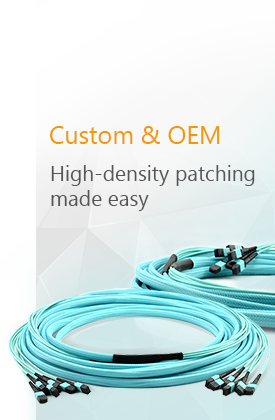Introduction
In the rapidly evolving field of photonics, Distributed Feedback (DFB) laser diodes stand as a cornerstone of modern optical communication and sensing systems. Renowned for their narrow linewidth, high stability, and single-mode operation, DFB lasers have become indispensable in industries ranging from telecommunications to biomedical engineering. This article delves into the working principles, cutting-edge applications, and emerging advancements of DFB laser diodes, offering insights into why they remain a critical technology in today’s interconnected world.
1. The Science Behind DFB Laser Diodes
DFB laser diodes distinguish themselves through their unique distributed feedback structure. Unlike conventional Fabry-Pérot lasers, which rely on mirrored cavities, DFB lasers integrate a periodic grating structure within the active layer of the semiconductor. This grating acts as a wavelength-selective filter, enabling single longitudinal mode operation and suppressing unwanted side modes. The result is a laser output with exceptional spectral purity (<1 MHz linewidth) and wavelength stability (±0.1 nm over wide temperature ranges).
Key advantages of DFB technology include:
-
Ultra-Narrow Linewidth: Ideal for high-speed data transmission and coherent communication.
-
Temperature Resilience: Built-in wavelength stabilization reduces dependency on external cooling.
-
Compact Design: Suitable for integration into dense photonic circuits and portable devices.
Transition: With their unique spectral properties, DFB laser diodes have found applications across numerous industries. Let’s explore how this technology powers innovation.
2. Applications Driving Demand for DFB Lasers
2.1 Telecommunications and 5G Networks
DFB lasers are the backbone of fiber-optic communication systems, enabling data transmission at speeds exceeding 100 Gbps. Their ability to maintain stable wavelengths in dense wavelength-division multiplexing (DWDM) systems ensures minimal crosstalk and maximum bandwidth efficiency—a critical requirement for 5G infrastructure and cloud computing.
2.2 Gas Sensing and Environmental Monitoring
In tunable diode laser absorption spectroscopy (TDLAS), DFB lasers operate at specific infrared wavelengths to detect trace gases like methane (CH₄) and carbon dioxide (CO₂). Their precision supports applications in industrial safety, emissions monitoring, and even Mars rover missions by NASA.
2.3 Biomedical Diagnostics
DFB lasers enable advancements in optical coherence tomography (OCT) and flow cytometry, offering high-resolution imaging for early disease detection. Recent studies also highlight their role in DNA sequencing and wearable health monitors.
2.4 LiDAR and Autonomous Systems
Automotive LiDAR systems leverage DFB lasers for their rapid modulation capabilities and resistance to ambient light interference, enhancing object detection accuracy for self-driving vehicles.
Transition: As industries push the boundaries of photonics, what does the future hold for DFB laser technology?
3. Innovations Shaping the Future of DFB Lasers
3.1 Integration with Silicon Photonics
Researchers are merging DFB lasers with silicon-based platforms to create low-cost, high-performance photonic integrated circuits (PICs). This integration promises breakthroughs in data centers and quantum computing.
3.2 Quantum Cascade DFB Lasers
Emerging quantum cascade DFB lasers operating in the terahertz range are unlocking new possibilities in security imaging and molecular spectroscopy.
3.3 AI-Driven Wavelength Tuning
Machine learning algorithms are being employed to dynamically optimize DFB laser wavelengths, enhancing adaptability in reconfigurable optical networks.
3.4 Sustainability Focus
Manufacturers are adopting greener processes, such as gallium arsenide (GaAs) recycling, to align with global sustainability goals without compromising performance.
Conclusion
DFB laser diodes continue to redefine the limits of photonic technology, bridging the gap between theoretical innovation and real-world impact. From enabling global connectivity to advancing life-saving medical tools, their role in shaping a smarter, faster, and safer future cannot be overstated. As research accelerates, DFB lasers will undoubtedly remain at the forefront of optical engineering.
More info about DFB Laser Diodes, please visit our official website: www.fiber-mart.com


